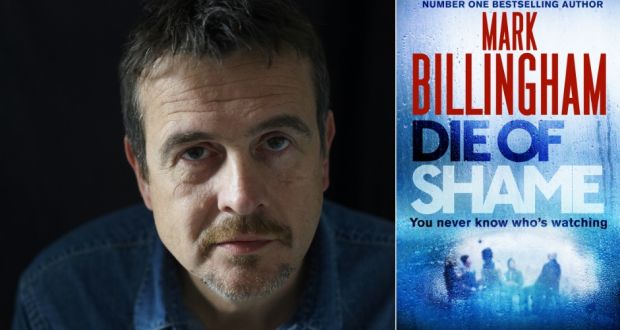The Ingredients for a First-Rate (Crime) Novel

By G. Miki Hayden
Instructor at Writer's Digest University online and private writing coach
firstwriter.com – Wednesday December 6, 2023
I’ve been an instructor at Writer’s Online Workshops (from Writer’s Digest) since the start of this century, and a writer and writing instructor since well before that. I’ve taught hundreds of classes, which I can multiply by a modest average of seven students per class, so I’ve seen a lot of student writing, and much of it even credible. Most of the work could use some smoothing out, aka editing, however, and I’ve done a lot of that daily in dealing with the many class assignments students post, plus in editing chapters and whole novels privately. I can find certifiable flaws in almost every piece I look at. If I can’t find defects (rarely), my mouth drops open in astonishment.
In a mystery writing class I taught in August 2019 (my student reminds me), I discovered quite a bit in the assignments from writers that needed improvement—not an unusual situation. But what was different from what I see in most of the class material I work with was a story with elements that were outstanding. The author (Walter Sutton) and I began to work with his pieces of writing in class, and then I worked with him after and since, to this very day, in editing two of his novels (going into the third): Finders Keepers and Losers Weepers, both now in print and ebook at Amazon, and with Flash Finnegan Book 3 to come, working title, Knick Knack Patty Whack.
But because I acted as the editor of the two finished/in print books from a traditional publisher, I couldn’t write a review to post on Amazon—such is the rule of the site—even though I’ve admired Walt’s work from the first, and I still do.
So I decided to write an article about the books and explain what I respect in author Suttons’ crime fiction novels and use that as a sort of lesson for other crime fic and even general fiction writers.
To proffer some of my writing credentials, I’ll start with kudos from The New York Times for my first published novel, Pacific Empire, in 1998, that consisted of high praise in a review and the book then being included on the paper’s Summer Reading List. In terms of crime genre qualifications, I’ve been a member of Mystery Writers of America for many more years than I should admit and have participated in the association fully, to the extent of being a member of both the national board (twice) and the local board (twice) sequentially, and having stories in occasional (competitive, blind reading) MWA anthologies and even winning a short story Edgar for one.
I also have a writing instructional, Writing the Mystery, published now in its third edition, which was nominated for several awards when it first came out, winning one. Moreover, I teach mystery writing and writing the thriller classes regularly at Writer’s Digest Online Workshops, along with other specific classes—including a new one on the novel opening for all areas of fiction. I’ve also placed three action-adventure-crime novels in the last couple of years, have two traditionally published novels (Rescued and Re-Live) out this year (2023), and have a police procedural coming in the spring.
So, here I go in my appreciation of Walter Sutton’s books that will explain what crime fiction writers—and other authors by implication—might do to create a stellar novel.
Finders Keepers Opening
Beyond doubt today is that the novel opening has to be strong and present a hook—a question stirring reader interest so intense that the story must inevitably be read. That’s what Sutton offered immediately in a stunning chapter one of Finders Keepers. I say stunning not as an exaggeration but because that was the effect of what I discovered on the page in our mystery writing class—though Sutton admits that what he posted for feedback was rough. Yes, indeed, but it was also perfect in its effect on me, the reader. I won’t outline exactly what the very dramatic opening was, but I will tell you that the presentation involved a penetrating portrayal of Flash Finnegan’s physical reaction to an event that any of us in all honesty would respond to in the same way if this police workplace situation (nothing violent) had taken us by terrible surprise—with pounding heart, nauseas, etc. A wow.
That’s the thing—Sutton understood well, and conveyed perfectly, the psychology of the situation. The scenes that then came next were knit together in logical, illuminating, and vivid succession.
The Rising Action
Flash’s unwelcome but uncontested and hurried divorce soon takes place; he says goodbye to his aging father to go on assignment/vacation; and now, Sutton’s protagonist shops for supplies of the sort one will buy for any contingency, since Flash, a well-trained law enforcement professional, doesn’t exactly know what he will face. But he does know how to get there—all unique and engrossing—(called rising action in terms of novel structure).
The reader (who at the time was only me) then follows Flash through his escape from his once more or less predictable life in Seattle to a new life on the island of Kauai, to perform what he calls “erasing” himself.
The Plot
A great deal of money has gone astray, but that is no longer Flash’s problem. He settles into his rented sub-par apartment near the Kauai beach to now become an early-morning drunken beach bum. One day when he’s testing out sobriety, his bothersome landlady calls him over to join her gang at an outdoor coffee and pastry eatery, and Flash begins to open up to local life. He’s immediately called upon to help others with a range of problems. In response, the new acquaintances begin to say Flash seems like a cop, a charge he denies vehemently—until at one point he identifies a local drug problem and seeks credibility so that he can help in solving the situation.
The Settings
But that’s not the entirety of either the settings in the novel or the plot. In fact, that would be just about enough for most crime fiction authors, but not for Sutton, who enlarges the story well beyond this local (though exotic) border. The expansion of the elements is what characterizes this author’s type of novel, bringing in subplots galore to turn the usual mystery in one locale with one circumscribed set of happenings into a financial and other criminal shenanigans extravaganza. Switzerland and its corrupt banks that sometimes exceed the law comprise the next multiple settings, and this novel’s thread is peopled by top crooks, assassins, and other dirty dealers who do the bidding of those casually wielding big bunches of cash.
The settings and the bad guys (and women) who do their worst aren’t brought in willy-nilly, but in a carefully crafted and logical lineup, so though varied and plentiful, they don’t confuse. This clarity is an important point that builds the readers’ understanding of what’s going on as well as trust in the author. The subplots do link up slowly and inevitably to present a cohesive whole. Money laundering of substantial millions, the sale of drugs on an island that prefers to cater to tourists, and multiple murders fit in like literary bricks in the construction of an exciting and memorable novel.
In Finders Keepers, the numbers of characters pile up, all with his/her in-depth third person point of view. Each, whether good guy or despicable sociopath, emerges clearly, building further rising action, intensifying the conflict, and leading the reader—where? To the complex and entirely thrilling climax and the reason for the novel’s title.
Now Flash has a set of friends here along with an attorney from among them since he’s quickly subjected to a grueling investigation by the FBI, despite his civic-minded heroism—of course.
This is a clearly and intelligently structured novel with plenty of everything—well-researched details, a plethora of real-seeming characters both good and evil, believable action, murder plus clever after-death revenge, not to mention a little romance, drug deals, fraud, exotic locales, and lots of money—ingredients just right for an enthralling plot and fast-paced adventure, ideas (not identical ones) that you can appropriate for your own next novel.
Losers Weepers
Well, wait. Author Walter Sutton took all those named components for his similarly well-presented sequel, Losers Weepers. Instead of outing vice in international finance and banking, Sutton brings us to Hong Kong from where one neatly organized multi-billion dollar global enterprise of non-governmental militaristic action soon faces down an L.A.-based post-FBI venture that opposes the Chinese company’s interests.
A lot, as you might guess, follows, from the attempt to collect a one-million-dollar-plus debt owed to a Vegas casino by the Asian bad-boy son of the supremely wealthy master of the worldwide establishment run from Hong Kong, to the murder of an agent of the secretive L.A.-based, also scheming, opposing team.
But Flash, giving an open house to local cops and friends in his new-old place on the Kauai beach, is immediately drawn in and slated by Hawaiian gangsters for heavy-duty revenge, due to his continuing anti-drug running campaign.
More mayhem follows with an unbelievable climax that I shall not by any means reveal. Flash just happens to be around at the time—6 a.m. or so—guns and grenade in hand.
If you can write a tale of this type and have a deft (no, not daft) editor like me, you can expect a major release of your next and following novels and may pin an author badge on, like any writer expecting at least a small slice of renown. (It may not be easy, boys and girls, but it can be fun.)
I had a little talk with Walter Sutton on his process.
Walter Sutton Interview
GMH: What was behind your writing Finders Keepers?
WS: I wanted to produce an “escape” or run-away-from-life story, a story that started out with a crash, a story about international financial crimes―read the entry in Wikipedia to follow Deutsche Bank's rumored global money laundering (one of many banks alleged to engage in illegal money flows) including the world of offshore accounts and secret money entering into so called legitimate investments around the world.
I love the island of Kauai, so I decided that would be a great landing place for my protagonist to hide out and lick his wounds after his life was destroyed in Seattle. The question was how does a money laundering story involving international banks intersect with the garden island of Kauai, an island with only seventy-five thousand residents?
GMH: Losers Weepers?
WS: Having landed Flash, my protagonist, safely on the island of Kauai in book one, and given that he had become a bit of a local hero, I was looking for a situation that would test him in a different way. In this case, he finds himself and his friends on Kauai in the middle of a dangerous war between a Beverly Hills security and collection firm and a global Chinese transportation company. Two powerful private armies declare war and do battle on Kauai with Flash and the denizens of the island in the middle.
GMH: Had you always wanted to write this kind of novel? Had you done a lot of reading in the international financial thriller genre?
WS: Yes, I have always wanted to write a novel, although I never really thought I could do that until I retired.
I am a voracious reader and listener to crime novels of all sorts. I didn’t start writing Finders Keepers until I was much older, so I’ve had fifty years of reading and enjoying hundreds of crime fiction books, from Agatha Christie to John Le Carre.
GMH: How did you come up with all the settings?
WS: Well Kauai, Hawaii was an easy choice. My wife and I have visited dozens of times over the years. I needed a place where Flash, my protagonist, could hide out and be a beach bum, and Poipu Beach, Kauai was a perfect fit.
In Finders Keepers I have key scenes in Kauai and Honolulu, where we have traveled often. Also I set other essential scenes in London, England; Zurich and Bern Switzerland; Niece and Le Havre France; Tulum, Mexico; the island of Nevis; Houston, Texas; and Seattle. I have done business in and/or visited all of those places.
In Losers Weepers I set scenes in Kauai; Beverly Hills; Marina Del Ray, California; Geneva, Switzerland; London, England; and Hong Kong. Again, I have done business and/or visited all of those places.
GMH: How much research do you do?
WS: I do as much research as is needed to create fiction based on believable real-world activity.
So for Finders Keepers, the storyline is about illegal movement of money through the banking and investment systems. My work in business and finance has given me a good understanding of how money moves legally and illegally around the globe. As for culture, locations, guns, other weapons, etc., I keep digging until I can present a realistic picture on which to build my story, whether it be a kind of gun or what riding in an executive jet looks like, or what going through passport and immigration control in Victoria, BC, Canada on your way to Kauai feels like.
Losers Weepers involves two warring private security organizations and I learned about these types of security organizations in my business career. I also discovered that a number of very large private compounds are located on Kauai that gave me a perfect opportunity to create a fictitious one of that type as the base to allow an international organization to misbehave.
GMH: What's next?
WS: Flash Finnigan Book 3, working title, Knick Knack Patty Whack. Again, readers will meet Flash on Kauai, where he discovers the body of a murdered man on a lava rock beach called Spouting Horn Park. The dead man has an eight-inch galvanized spike driven into his head through his ear. This is a story about an unsolved armed robbery committed twenty-five years before on Oahu that somehow threatens lives a quarter of a century later on Kauai.
GMH: We’ll prepare ourselves for Knick Knack Patty Whack by reading Finders Keepers and Losers Weepers and writing our own thrillers in the meantime.
About the Author
G. Miki Hayden is a short story Edgar winner. She teaches a mystery writing and a thriller writing and other writing classes at Writer's Digest online university. The third edition of her Writing the Mystery is available through Amazon and other good bookshops. She is also the author of The Naked Writer, a comprehensive, easy-to-read style and composition guide for all levels of writers.
Miki's most recent novel out is Respiration, the third book in her Rebirth Series. The New York Times gave her Pacific Empire a rave and listed it on that year's Summer Reading List. Miki is a short story Edgar winner for "The Maids," about the poisoning of French slave holders in Haiti.
"Holder, Oklahoma Senior Police Officer Aaron Clement is out for justice above all, even if he irritates the local hierarchy. Hayden in Dry Bones gives us nothing-barred investigation and plenty of nitty-gritty police procedure—which makes for a real page turner." — Marianna Ramondetta, author of The Barber from Palermo




 Want to learn how to write a crime book? Just ask the experts
Want to learn how to write a crime book? Just ask the experts Mark Billingham: why research comes last, and other crime-writing tricks
Mark Billingham: why research comes last, and other crime-writing tricks How to write a killer crime novel, by Val McDermid (who’s sold 15 million of her own)
How to write a killer crime novel, by Val McDermid (who’s sold 15 million of her own) Cheating on my crime series to write a romcom on the side
Cheating on my crime series to write a romcom on the side Murder Books 101: The Rise of True Crime, From Highbrow to Cash Cow
Murder Books 101: The Rise of True Crime, From Highbrow to Cash Cow Literary agents share the magic ingredients they’re looking for in a novel
Literary agents share the magic ingredients they’re looking for in a novel Meet the People Behind Some of Today's Best Small Publishers Specializing in Crime Fiction
Meet the People Behind Some of Today's Best Small Publishers Specializing in Crime Fiction Val McDermid, Michael Robotham, J.P. Pomare on writing crime
Val McDermid, Michael Robotham, J.P. Pomare on writing crime Five Steps to Writing a Crime Novel Inspired by Your Family (Without Making Everyone Hate You)
Five Steps to Writing a Crime Novel Inspired by Your Family (Without Making Everyone Hate You) The State of the Crime Novel, Part 1: Writing Life
The State of the Crime Novel, Part 1: Writing Life Could you write a crime novel? Candice Fox has some advice for would-be authors
Could you write a crime novel? Candice Fox has some advice for would-be authors 7 Essential Ingredients to Writing a Successful Holiday Movie
7 Essential Ingredients to Writing a Successful Holiday Movie Want to know the secret to writing a great crime novel?
Want to know the secret to writing a great crime novel? How I write: For crime writer Kathy Reichs there are three phases to her routine
How I write: For crime writer Kathy Reichs there are three phases to her routine The Importance of a Great Setting in Crime Fiction
The Importance of a Great Setting in Crime Fiction Revealed: Why the Dragon Tattoo girl is really a man (...and why Stieg Larsson wrote off Inspector Morse)
Revealed: Why the Dragon Tattoo girl is really a man (...and why Stieg Larsson wrote off Inspector Morse) Between the novel and the book
Between the novel and the book Writers' Handbook 2025 now available to buy
Writers' Handbook 2025 now available to buy Alex Cochran joins Greyhound Literary
Alex Cochran joins Greyhound Literary South West publishing group seeking submissions
South West publishing group seeking submissions New Publisher Listing: Muswell Press
New Publisher Listing: Muswell Press Bloomsbury snaps up academic publisher in ‘game-changing’ acquisition
Bloomsbury snaps up academic publisher in ‘game-changing’ acquisition New Literary Agency Listing: Greenstone Literary
New Literary Agency Listing: Greenstone Literary English Department launches first literary magazine
English Department launches first literary magazine Giulia De Biase joins Andrew Nurnberg Associates, Milan
Giulia De Biase joins Andrew Nurnberg Associates, Milan New Literary Agency Listing: Creative Roots Studio
New Literary Agency Listing: Creative Roots Studio Royal Literary Fund’s hardship grants for writers see applications increase by 400%
Royal Literary Fund’s hardship grants for writers see applications increase by 400% Human Kinetics buys Lotus Publishing for undisclosed sum
Human Kinetics buys Lotus Publishing for undisclosed sum New Literary Agent Listing: Emily Barrett
New Literary Agent Listing: Emily Barrett Ed Wood leaves Sphere editorial to become agent at The Blair Partnership
Ed Wood leaves Sphere editorial to become agent at The Blair Partnership Mubi Moves into Book Publishing with Mubi Editions Imprint
Mubi Moves into Book Publishing with Mubi Editions Imprint
